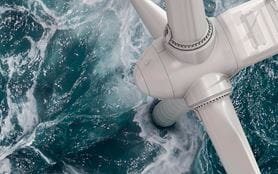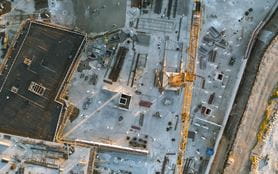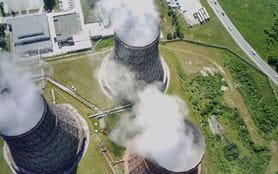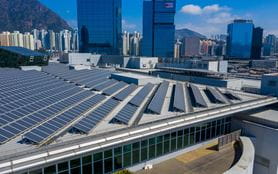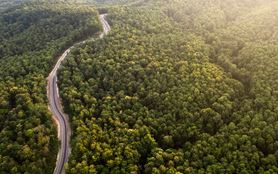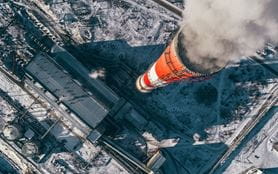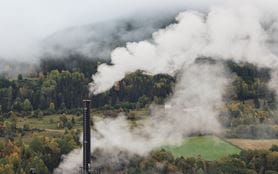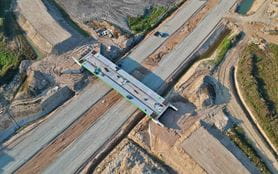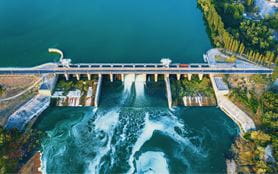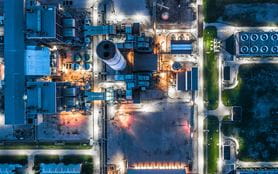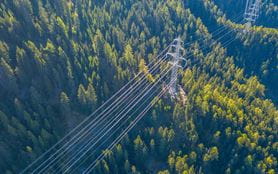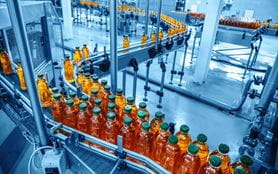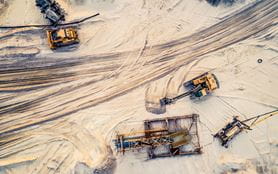Japan unveils green subsidy programme – can it compete with the U.S. Inflation Reduction Act?
Related people
Headlines in this article
Related news and insights
News: 19 March 2024
A&O continues to be recognised for market-leading position in India
News: 13 September 2023
Allen & Overy advises Port of Melbourne on its first Sustainability-Linked Loan
Publications: 21 April 2023
Publications: 02 February 2023
When the Biden Administration launched the Inflation Reduction Act (IRA) in summer 2022, the USD370 billion boost it gave to U.S. green investment via a multitude of grants, loans and tax credits caught the attention of businesses across the world. Private capital is now flowing into a range of low-carbon infrastructure projects across the country, helping to accelerate the U.S. green transition.
The diplomatic response to the IRA has been mixed, however. The law sparked outcry in Europe, with the EU branding it protectionist and calling on Washington to waive its local content rules so European products are eligible for the same incentives that apply to goods manufactured in the U.S.
This criticism has merit but the inescapable truth is that European businesses find the IRA’s incentives more attractive than anything available at home. Europe now faces a choice: is it more concerned about state aid or decarbonisation?
Japanese companies, too, have been pursuing large-scale energy transition projects in the U.S., including hydrogen storage, nuclear plants and wind and solar installations (some with hydrogen production facilities attached). Japanese companies talk about learning skills and developing technology overseas and bringing these home to Japan. Implicitly though, there is more opportunity for them in the U.S. right now, too.
That is set to change however with the launch of a massive incentive package by the Japanese government. The draft Green Transformation Act – published in February – aims to accelerate decarbonisation in Japan to achieve its goal of cutting 46% from Japan’s carbon emissions by the turn of the decade relative to their 2013 levels, and make Japan carbon neutral by 2050.
A multibillion-dollar incentive scheme
Following a period of public scrutiny and comments, the draft is now being considered by the Japanese Parliament.
Its current form would see the government issue in total around USD150 billion in Japanese Government Bonds (or JGBs) starting this financial year to fund the initial wave of investments, with the aim of catalysing USD1 trillion of developments over the next 10 years.
The package covers all aspects of the green transition, from nuclear to renewables, grid upgrades, energy efficiency measures, electric vehicles, carbon taxes, an emissions trading scheme and a border adjustment mechanism.
More than one-third (USD60 billion) of the funding is earmarked to build “clean” hydrogen and ammonia value chains as Japan bids to boost its security of supply and decarbonise its energy generation. While some of the money will be spent domestically, much of it will be invested overseas, for example to produce hydrogen in Australia or the Middle East, which will then be shipped to Japan for storage and use. However, where producers are generating outputs for multiple markets, only the portion exported to Japan will be eligible for government support.
Given the scope of the package and its implications, we will be publishing more over the coming months. But what is clear right now is that, as with liquefied natural gas (LNG) in the 20th century, Japanese investment will be a game-changer for clean hydrogen and ammonia in the 21st.
The dynamics of hydrogen and ammonia value chains
Creating hydrogen and ammonia value chains has always been expensive because so much new kit needs to be built. In the case of green hydrogen, huge amounts of renewable infrastructure is required because a significant proportion of the energy generated is lost in producing hydrogen, transporting it to users and then converting it back into electricity.
Japan, poor in energy resources, is planning to deploy subsidies to secure supplies of new sources of energy via supply chains originating outside of Japan. It has always been concerned about energy security, a fear that has only been exacerbated by recent market instability. The more sources of energy it has - and the sooner they are available - the better.
By 2040, Japan aims to utilise 12 million tonnes of hydrogen. By 2030, Japan aims to introduce 15GW of electrolysers worldwide, about 10% of the global market. In terms of the end-use, more than 80% will be used for power generation, and to a much lesser degree, for steel and iron production, and petrochemical and refinery processes.
The hydrogen value chain

The Supply Chain Subsidy package explained
Japan’s Agency for Natural Resources and Energy (ANRE) published an interim summary in January 2023 outlining a two-pronged approach to supporting the generation and use of clean hydrogen and ammonia. The first prong is a subsidy scheme for international hydrogen and ammonia supply chains (the Supply Chain Subsidy). The second prong is a support scheme for industrial clusters for the utilisation of hydrogen and ammonia in Japan (the Clusters Support).
Both subsidy schemes aim to create a domestic market equivalent to 1% of Japan’s primary energy consumption by 2030, as well as drive down costs. This article focuses on the Supply Chain Subsidy, the priority for ANRE. We will explain the Cluster Support in greater detail in a subsequent article, however, it is introduced here to provide an understanding of the two schemes and how they interact.
Who qualifies?
The Supply Chain Subsidy will be available to producers of hydrogen and ammonia, with users covered by a separate set of incentives (although users will benefit from lower costs, more on which below). Within this, the ANRE summary identifies three groups of producers:
- those that produce, transport and supply clean hydrogen and ammonia to others;
- trading companies or intermediaries that buy and sell clean hydrogen and ammonia; and
- those that produce and transport clean hydrogen and ammonia for their own consumption.
The subsidies are aimed primarily at group 1, although there are ongoing discussions about extending them to groups 2 and 3. Here, the debate is focused on the extent to which these producers will contribute to the commercialisation of products and the energy security of Japan, as well as to reducing production costs and creating demand.
What’s covered?
Hydrogen and ammonia production and transport facilities, but not, broadly speaking, storage infrastructure in Japan. The Clusters Support covers the latter.
The Supply Chain Subsidy and the Clusters Support will be an addition to the existing Green Innovation Fund (GIF), which provides long-term financing to help Japan achieve carbon neutrality (you can read more about the GIF here) and covers three main stages of development:
- feasibility studies;
- detailed engineering design; and
- infrastructure development, with priority afforded to priority sites.
Why transport?
Japan is a mountainous country with no cross-border pipeline or ability to import hydrogen and ammonia via land. There is a limited amount of space on which to develop the giga-scale renewable power projects required to produce green hydrogen, and as a result it is unlikely Japan can establish a self-sustaining, domestic hydrogen and ammonia value chain.
It will therefore need to develop a specialised shipping fleet to import hydrogen and ammonia, much like it has for LNG. Including transport within the boundary of the subsidies will boost Japan’s shipbuilding industry, which has lost ground to Korean and Chinese rivals in recent years.
Why not storage?
A separate support package, the Clusters Support, covers hydrogen and ammonia utilisation clusters in Japan including storage, with the government keen to avoid the “double-dipping” (or “stacking”) of subsidies.
Here, three large and five smaller utilisation clusters in Japan have been identified. The Clusters Support will focus on developing shared infrastructure (e.g. pipelines, storage and transport facilities) that together will contribute to large-scale use of hydrogen and ammonia by multiple operators on site.
How do the Supply Chain Subsidies work?
Japan’s subsidies are designed to ensure “clean” hydrogen and ammonia are sold for the same price as LNG and coal, respectively. This decision is based on the assumption - and underlined by Japan's focus on power generation - that hydrogen will be used to co-fire gas-fired power plants, and ammonia will be used to co-fire coal-fired power plants, in each case, reducing emissions and ensuring that end-users will not pay more for greener energy inputs.
Producers will be compensated for the difference between the target price (based on the estimated cost of production and operation for the whole supply chain) and the reference price (i.e. what end-users pay for the product). Under the currently contemplated scheme the target price is not subject to a floor (unlike in the UK), meaning producers will be paid the full difference.
The subsidies explained

While further details are required on the rules around stacking, we expect the Japanese government will be careful not to allow any doubling-up of subsidies or tax equity offered by schemes such as the U.S. Inflation Reduction Act and the UK Low Carbon Hydrogen Business Model (LCHBM).
Where there is overlap, the government may look to deduct the portion of capital and operating expenditure supported by other countries’ subsidies from the amount covered by its own support measures.
What type of hydrogen are we talking about?
The subsidy scheme targets “clean” hydrogen and ammonia, either green or blue (the former is produced using renewable energy to electrolyse water into hydrogen and oxygen, the latter from fossil fuels with the carbon captured and stored). “Grey” products (where the carbon isn’t captured) could also qualify on an exceptional basis if there is a clear path towards decarbonisation.
At present, the criteria for what constitutes a “clean” product have not been specified. ANRE is suggesting the use of standards developed by industry bodies such as the Japan Hydrogen Association and the Clean Fuel Ammonia Association.
Levels of carbon and other greenhouse gases emitted through the production process are likely to require third party certification, and whatever criteria are adopted will need to be re-assessed periodically as the urgency of decarbonisation grows and technologies improve. ANRE has not specified how often such criteria will change, but has indicated that relevant factors driving a revision would be an update to the equivalent standards globally, such as RED/RFNBO, CertifHy Low Carbon and EU taxonomy in the EU, the Low Carbon Hydrogen Standard in the UK and the IRA in the US. The impact of re-assessment of standards needs to be understood. Uncertainty and increasing tightening of standards could reduce attractiveness of developing projects to support the Japanese supply chains relative to other supply chains which do not face the same issues.
ANRE has also proposed using a sliding scale of tax credits linked to emissions volumes as well as a sliding target price to create an incentive for producers to be ambitious in their Net Zero goals.
When will the support start, and how long will it last?
For “first mover” producers (i.e. those targeting commercial production between now and 2030) the subsidy programme is contemplated to last for 15 years (extendable to 20). However the summary contains a proviso that the government may update and revise the scheme if the market creation of clean hydrogen and ammonia accelerates. Like with standards above, the possibility of revision (including on the strike price, as shown above) means uncertainty for investors and may discourage participation, particularly if similar subsidy schemes elsewhere do not give rise to such uncertainty.
Will the subsidies cover excess production or the risk of a shortfall?
The summary states that subsidies for excess production (i.e. above and beyond the committed sales volume) should not be essential for the viability of any project, although the issue is under consideration. Shortfalls in the volume production to meet any sales obligations are also not covered, meaning the producer will bear the full technology and performance risk on any project.
What challenges can we see in the legislation?
What qualifies for subsidies?
ANRE has identified a range of potential criteria for assessing “first mover” bids for subsidies. These include:
- Compliance with safety regulations;
- Impact on Japan’s energy security (e.g. the promotion of local production, long-term commitments on upstream natural resources or power supply, supply chain risk management, feedstock price risk etc);
- Impact on the environment (e.g. reduction in CO2 emissions);
- Economic efficiency (e.g. target price, aggregate capital expenditure, prospect of non-reliance on and independence from the subsidy scheme);
- Commercial feasibility (e.g. scheduled commercial operation date, minimum volume, technology, offtaker commitment and diversification, post-subsidy use of outputs etc); and
- Impact on the wider economy (e.g. location of related infrastructure, utilisation of domestic technology, expansion of domestic market, entry to overseas market, technical innovation etc).
These criteria are broad and require additional detail. Just as with other forms of infrastructure, clarity around the criteria and point-scoring system will be vital for producers as they prepare bids.
What’s in scope?
The summary notes that further consideration is needed as to whether expenditure on upstream renewable power projects is eligible for the subsidies. Many hydrogen and ammonia projects in remote locations – or where there is no current grid connection – are being developed or planned on an “integrated” basis with “captive” renewable infrastructure for downstream hydrogen facilities. Where upstream renewable power is being developed on an integrated basis, the developers would still be looking to recover their capex, opex and margin on the renewable power either at the point of sale of renewable electricity, or ultimately through the offtake price on hydrogen and ammonia. Rather than not supporting it, it would be more logical to only support the renewable power to the extent it goes into the Japanese supply chain because renewables will be needed on a much larger scale than otherwise because of the energy losses in conversion to hydrogen and ammonia. The argument that the cost of renewable power has come down does not hold if you have to build significantly more for a value chain project.
There are also questions around the extent to which interface risk (i.e. in relation to the development and availability of carbon capture and storage projects for “blue” hydrogen and ammonia, or the availability at scale of electrolysers for “green” projects) is covered. The failure of one link in the chain could cause significant cost overruns. In addition it is also unclear whether financing costs can be taken into account when estimating the target price. They should be, otherwise the subsidies will favour few large companies that do not depend on debt financing for investments of significant scale.
Alongside this, producers will want to understand whether their exposure to inflation and forex risk is covered by the subsidies. Hydrogen and ammonia value chain projects will extend beyond Japan, and as a result, many of the costs may denominated entirely in US Dollars or other currencies. To the extent the subsidies are paid in Japanese yen, it is unlikely that the developers will be able to take or hedge such a large currency exposure in the commercial market.
Lack of volume support
Unlike the UK which initially tried to tackle this risk in their earlier policy, Japan’s subsidies do not provide volume support. ANRE seems to assume that, on the demand side, end-users will simply swap LNG, coal or other fossil-fuel based resources with cleaner hydrogen and ammonia alternatives, and that developers will not face any issues with the volume of demand. The Supply Chain Subsidy does not address the risk that the developers may never sell their outputs or that their offtakers might not take them. Certainty of offtake is assumed, and is one of the assessment criteria outlined above. On the UK side, the UK LCHBM contemplates a very limited volume support, subject to a number of conditions (e.g. a reduction in hydrogen volume sales to below 50% for a qualifying event) and aggregate and annual caps, and remains to be seen whether this is appropriate for the first-mover investments.
Reassessment of “clean” criteria and strike price
With the criteria for what constitutes “clean” hydrogen and ammonia subject to review (and likely to get more stringent over time), producers will need to “future proof” their projects to ensure they qualify for subsidies over their full term. This is likely to involve the negotiation of a buffer in the product specification in the initial contracts. This produces uncertainty for developers. The nuclear power industry is a cautionary tale where large companies have been driven to bankruptcy as a result of cost overruns, in many cases due to the government’s continuous “updates” to the specifications and safety regulations applicable. The Supply Chain Subsidy should not be a source of uncertainty to the developers, to make the significant projects in the pipeline investable.
ANRE sets out a review period (e.g. five years) for the strike price to be reset on a project-by-project basis to account for changing economics, including the evolution of a carbon price in Japan. This is not the case in the U.S. and UK schemes, and the Japanese government will therefore need to be careful this doesn’t decrease the appeal of investing in Japan relative to other jurisdictions.
Impact of carbon accounting
Will businesses be prepared to invest when the carbon emissions of creating the entire value chain (for example in manufacturing the necessary concrete and steel) become subject to carbon pricing or impact their Net Zero targets? The overall emission savings of each output will depend on the project in question.
Will the subsidies help Japan become carbon neutral?
Industry analysts expect coal prices to fall further than LNG as demand drops due to climate concerns. As a result we may see a higher proportion of the subsidies applied to ammonia projects, irrespective of their impact on reducing Japan’s carbon emissions.
Despite everything laid out above, Japan has huge expertise in energy infrastructure (and the summary is just that, a summary), so we expect that the fleshed out version will deal with many of these concerns.
Any other noteworthy developments?
In parallel to the Green Transformation Act, the Japanese parliament is also considering a series of amendments to the Japan Bank for International Cooperation (JBIC) Act. The JBIC is a government export credit agency through which Japan has been supporting energy and infrastructure projects around the world for decades).
The Draft Bill proposes to expand the scope of possible JBIC financings to non-Japanese borrowers (where the project involves the production of assets which benefit a supply chain to Japan), and in the context of hydrogen and ammonia projects could allow the Japanese companies to invest in the best green technologies globally in order to deploy them at home.
It also significantly widens the scope of potential JBIC financings for supply chain projects developed by non-Japanese borrowers, which are currently tied to the export of Japanese goods and services, the ownership of a project by Japanese companies, or the offtake of products by Japanese companies.
Japan is the key destination market of existing global energy supply chains, and its role is likely to continue in emerging energy supply chains. Both the Green Transformation Act and the amendments to the JBIC Act are being discussed at the current session of the parliament, scheduled to end on 21 June 2023. In parallel, Japan's national hydrogen and ammonia strategy will be updated by the end of May 2023. Whilst further details remain to be fleshed out, as discussed in this article, the adoption of these acts will be ground-breaking to stakeholders of energy transition not just in Japan, but globally.





